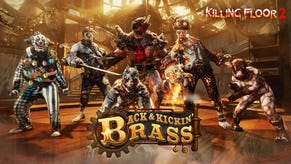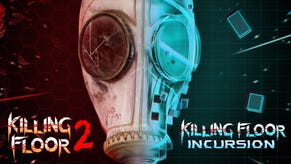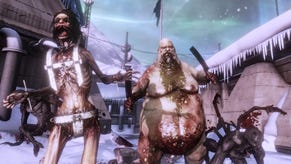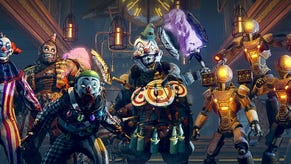On its 15th anniversary, Killing Floor stands as one of the best zombie shooters – and the timing couldn’t be more perfect for Killing Floor 3
Killing Floor has always been my zombie shooter of choice, and it all has to do with the fundamentals of its approach to gameplay.
We don’t talk enough about Killing Floor. I get that zombie shooters haven’t been in-vogue for a while, but like everything else in life, it’s cyclical, and I feel like we’re on the other side of that cycle today. Everyone thought a simple game about slashing through zombies for 30 hours with creative weapons wouldn’t do well, but how well it did surprised even its own publisher, despite (technically) being in development for ten years.
Zombies never really go out of style, and I don’t think any shooter nailed that feeling of round-based zombie-killing action quite as tightly as the Killing Floor games.
Today is the 15th anniversary of the original Killing Floor - or 19th, if you count the original Unreal Tournament mod that started it all. Since then, there’s been one sequel that took it (mostly) to new heights, and brought it to consoles for the first time. We’re eagerly anticipating new details about the recently announced Killing Floor 3 as I write this.
In this apocalyptic climate of studio closures and unprecedented levels of layoffs, It’s important to look back at how the series, which helped establish Tripwire Interactive as a double-A studio, figured out the formula close to two decades ago, and stuck to a sustainable and proven model that works to this day.
Perhaps the one thing worth taking away from Killing Floor’s design is how it thrives on simplicity. It doesn’t have a dozen obscure items you need to keep track of so you can solve some sort of Easter egg. And though it has RPG mechanics, it never needed pointless numbers flying out of enemies as you shoot them to deliver on its power fantasy. Instead, it relies on a tried-and-tested formula of gradual power progression and an easy-to-understand, round-based structure.
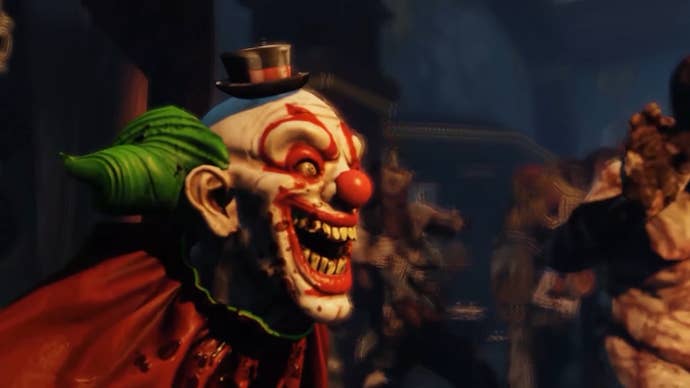
Progression in a typical Killing Floor round somewhat follows that of Counter-Strike’s, in that access to power is gated through money. The better you do, the more cash you’re going to have at the end of the round, and the wider your available options become. Killing Floor is not a PvP game (though the sequel does offer the option), so it slowly ramps up the difficulty of enemies to make picking more powerful weapons not only viable, but often necessary.
While the original game simply boosted enemy health and damage, the sequel approached difficulty in a smarter way; by making enemies more aggressive, and giving them access to more attacks. Killing Floor 2 also had a much wider pool of variants to pull from, which made that climb in difficulty even more organic.
Crucially, however, buying expensive weaponry isn’t the only way to succeed in later rounds. As someone who played on unstable internet connections for most of their life, I was often a late-joiner to my friends’ games, which meant that I almost always had to start off with a lot less dosh than I’d like - but that never ruined it for me. For one, teammates can share their earnings with you, which is a simple enough solution. But Killing Floor also has its roots in tactical shooters (of all things), so your weapon handling ability counts for a lot here.
You may be stuck with a weak starting pistol, but if you’re good at landing headshots - especially when the game triggers those iconic slow-motion bouts, you’re going to be just fine. The sequel took that a step further with its more defined classes, which, provided you’ve levelled them up, starts you out with some unique bonuses and exclusive weapons that last an entire round, regardless of how much money you get to spend later.
.jpg?width=690&quality=70&format=jpg&auto=webp)
None of this would work if the moment-to-moment didn’t feel good enough. Most big-budget games today rely on extraneous elements to inflate the ways players engage with them. That often takes the form of progression-driven, RPG-inspired elements. But as proven time and again, It’s Destiny 2’s core mechanics that keep players coming back - and it’s the one thing most of its competitors never managed to replicate. It’s the same way with Killing Floor.
Tripwire has a history of creating slower WW2 tactical shooters, and you could tell that approach to weapon handling is what informed much of the shooting mechanics in Killing Floor. They’re dialled down to fit the faster pace, and to obviously make the game more accessible, but the root of every weapon animation can be found in Red Orchestra. Zombie shooters never focus on gun handling, not in that same way. Back 4 Blood is the closest one of those has gotten to prioritising weapon feel, but even there, it took a backseat to the rest of its design.
It might sound strange to read this, but there’s a clear need in the market for a zombie shooter right now. Just recently, Sker Ritual, a multiplayer off-shoot of a horror game you’ve likely never heard off, generated a lot of buzz on Steam. You may scoff at its sub-6,000 peak concurrent, but that was already well above what it had during Early Access. All for a fairly serviceable Call of Duty Zombies-inspired shooter.
.jpg?width=690&quality=70&format=jpg&auto=webp)
Stepping outside the indie space, CoD Zombies players have been starved for a round-based iteration for years. Vanguard’s take on the mode bombed hard, and Modern Warfare 2 skipped it entirely. Last year’s Modern Warfare 3 didn’t have one either, and instead added zombies to the repurposed Warzone DMZ mode. This year’s game, reportedly lead by Treyarch, will almost certainly bring back round-based Zombies, but there’s plenty of room for a different, more straightforward take on that in the form of Killing Floor 3.
Until then, both Killing Floor games can often be found on deep discounts. They’ve enjoyed years of free updates, and still foster active player communities. Best of all, they hold up very well to this day. As I see it, the best way to celebrate the legacy of my favourite zombie shooter series is to load up a round and slay to the heavy metal beats of their soundtracks while I wait for Tripwire to reveal more about the next one.



